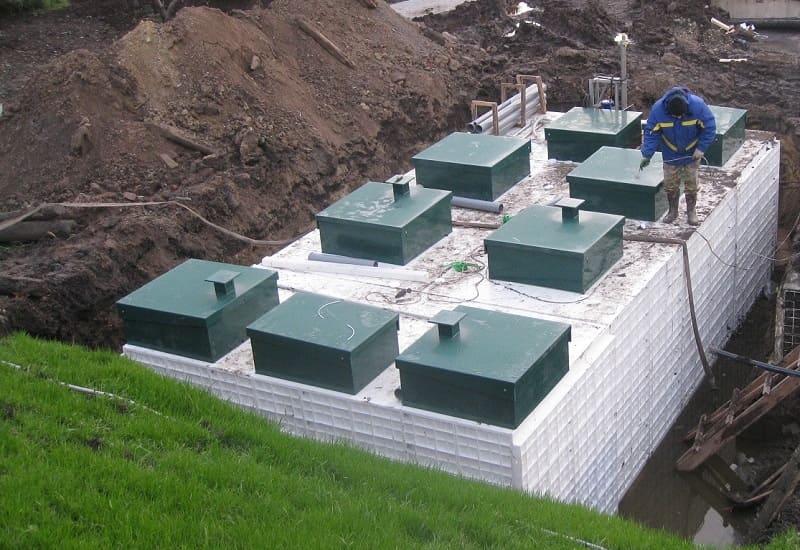When it comes to managing wastewater in a residential setting, understanding septic tank sizing is crucial, especially for a 4-bedroom house. A septic system is not just a luxury; it’s a necessity for homes that are not connected to a municipal sewer system. The right size septic tank ensures that your household’s wastewater is treated efficiently, preventing costly repairs and environmental hazards.
Choosing the appropriate septic tank size involves several factors, including the number of bedrooms, daily water usage, and the type of soil in your yard. For a 4-bedroom house, the general rule of thumb is that you need a tank that can handle the increased volume of wastewater generated by a larger household. Typically, the size of a septic tank is measured in gallons, and for a 4-bedroom home, a tank with a capacity of at least 1,000 to 1,500 gallons is often recommended.
However, this is not a one-size-fits-all solution. The actual size may vary based on specific household habits, the number of occupants, and local regulations. For instance, if your family uses a significant amount of water for activities like laundry, gardening, or frequent guests, you might need a larger tank. Conversely, if your household is more conservative with water usage, a smaller tank could suffice.
Moreover, the soil type and drainage characteristics of your property play a significant role in determining the effectiveness of your septic system. Sandy soils drain quickly, while clay soils retain water, affecting how well your system functions. Therefore, a comprehensive assessment of your property is essential before making a decision.
In this guide, we will delve deeper into the specifics of septic tank sizing for a 4-bedroom house, exploring the factors that influence size, the implications of choosing the wrong size, and practical recommendations to ensure your septic system operates smoothly.
| Key Factors | Description |
|---|---|
| Household Size | Number of bedrooms and typical occupancy. |
| Water Usage | Daily water consumption habits of the household. |
| Soil Type | Drainage characteristics of the property. |
| Local Regulations | Compliance with local health and safety codes. |
Understanding Septic Tank Sizing for Your 4-Bedroom Home
Selecting the right septic tank size for a 4-bedroom house is not merely a matter of convenience; it’s a critical decision that affects your home’s sanitation and environmental impact. A septic system is designed to treat and dispose of wastewater from your home, and if it’s not sized correctly, you could face a myriad of issues ranging from system failure to costly repairs.

Factors Influencing Septic Tank Size
When determining the appropriate size for your septic tank, several key factors come into play:
- Number of Bedrooms: The number of bedrooms is a primary factor in sizing. Generally, a larger household generates more wastewater.
- Daily Water Usage: Consider how much water your household uses daily. This includes showers, laundry, dishwashing, and toilet flushing.
- Soil Type: The drainage capacity of your soil can affect how quickly your septic system can process wastewater. Sandy soils drain faster than clay soils, which can retain water.
- Local Regulations: Different regions have specific regulations regarding septic tank sizes. Always check local codes before installation.
Recommended Septic Tank Sizes for 4-Bedroom Houses
For a 4-bedroom house, the recommended septic tank size typically ranges from 1,000 to 1,500 gallons. Here’s a breakdown of the sizes based on household needs:
- 1,000 Gallons: Suitable for smaller families or those with conservative water usage habits.
- 1,250 Gallons: A middle-ground option that accommodates average water usage and family size.
- 1,500 Gallons: Recommended for larger families or homes with high water consumption, such as frequent laundry or guests.
The Risks of Incorrect Sizing
Choosing the wrong septic tank size can lead to serious problems, including:
- System Overload: A tank that’s too small will fill up quickly, leading to backups and overflows.
- Inadequate Treatment: Insufficient tank size may not allow for proper treatment of wastewater, resulting in environmental contamination.
- Increased Maintenance Costs: An undersized tank will require more frequent pumping, leading to higher maintenance costs over time.
- Regulatory Issues: Non-compliance with local regulations can result in fines and mandatory upgrades.

Assessing Your Property
Before making a final decision on the size of your septic tank, it’s essential to conduct a thorough assessment of your property. Here are some steps to follow:
- Evaluate Water Usage: Keep track of your household’s water consumption for a week to get an accurate estimate.
- Test Soil Drainage: Conduct a percolation test to understand how well your soil drains.
- Consult Local Regulations: Check with your local health department for specific requirements regarding septic tank sizing.
- Seek Professional Advice: Consult with a septic system professional to ensure that you’re making an informed decision.
Actionable Recommendations for Septic Tank Sizing
Choosing the right septic tank size for a 4-bedroom house is crucial for maintaining a functional and efficient wastewater management system. Here are some actionable recommendations to guide you through the process.
1. Calculate Your Household’s Water Usage
Understanding your household’s water consumption is the first step in determining the appropriate septic tank size.
- Track your water bills over a few months to get an average.
- Consider the number of showers, laundry loads, and dishwashing cycles per week.
- Use water-saving fixtures to reduce overall consumption.
2. Conduct a Soil Percolation Test
The type of soil on your property significantly impacts the effectiveness of your septic system.
- Hire a professional to perform a percolation test, which measures how quickly water drains through the soil.
- Identify the soil type: sandy soils drain quickly, while clay soils retain water.
- Use the results to inform your septic tank size and design.
3. Consult Local Regulations
Local health departments often have specific guidelines regarding septic tank sizing and installation.
- Contact your local health department for regulations that apply to your area.
- Ensure that your chosen septic tank size complies with local codes.
- Be aware of any permits required for installation or upgrades.
4. Choose the Right Tank Size
Based on your calculations and assessments, select a tank size that meets your household’s needs.
| Household Size | Recommended Tank Size (Gallons) | Notes |
|---|---|---|
| 1-2 Bedrooms | 1,000 | Ideal for smaller families with low water usage. |
| 3-4 Bedrooms | 1,250 | Suitable for average families with moderate water usage. |
| 4+ Bedrooms | 1,500 | Recommended for larger families or high water consumption. |
5. Plan for Future Needs
Consider your household’s future needs when selecting a septic tank size.
- Account for potential increases in family size or lifestyle changes.
- Think about adding water-intensive appliances, like dishwashers or washing machines.
- Opt for a larger tank if you anticipate significant changes in water usage.
6. Schedule Regular Maintenance
Once your septic system is installed, regular maintenance is essential for longevity.
- Schedule pumping every 3-5 years, depending on your tank size and usage.
- Inspect the system annually for any signs of wear or malfunction.
- Keep records of maintenance and inspections for future reference.
By following these actionable recommendations, you can ensure that your septic tank is appropriately sized and maintained, leading to a more efficient and trouble-free wastewater management system for your 4-bedroom home.
0 Comments